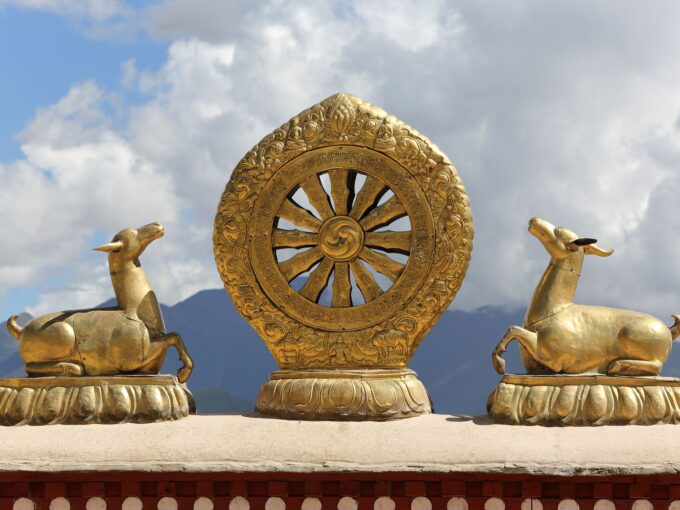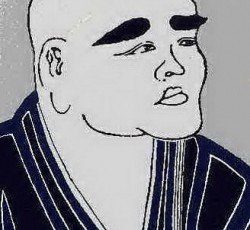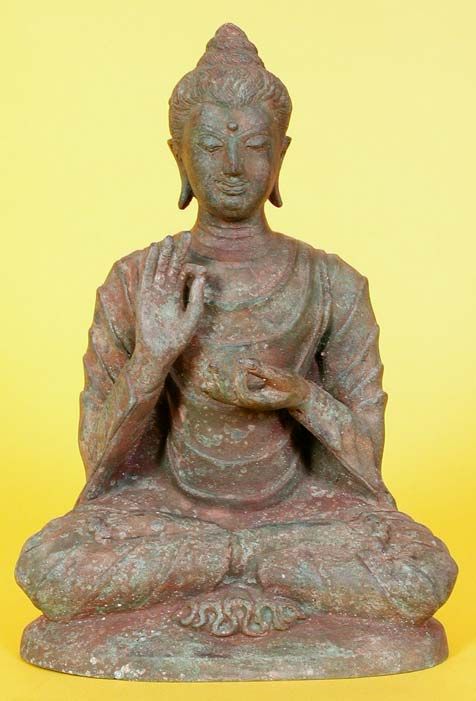AUM or OM (in Devanagari ॐ) is one of the most sacred symbols in Hinduism. In Sanskrit known as praṇava (प्रणव) lit. “to sound out loudly” or oṃkāra (ओंकार) lit. “oṃ syllable”)
Hindus consider AUM to be the universal name of the Lord and that it encompasses all of Creation. OM symbolizes The Supreme Personality of Godhead (Parabrahman). Hindus believe that the essence of the Vedas (ancient Indian scriptures) is enshrined in the word Aum. The belief that the Lord started creating the world after chanting “aum” gives this religious symbol a fundamental relevance to the Hindu view of creation. Hence, its sound is considered to create an auspicious beginning for any task that one may undertake.
There are various accounts of its origin; one that it is the term of assent used by the gods, and possibly an old contracted form of the Sanskrit word evam meaning “thus.” The Manu-Sangita (Laws of Manu), a religious work of social laws, states the word was formed by Brahma himself, who extracted the letters a-u-m from the Vedas.
The word AUM consists of three sounds. The sound a symbolises the creation of the universe, thereby denotes Lord Brahma. The sound u symbolises the existence of the universe, thereby denotes Lord Vishnu. The sound m symbolises the end or the destruction of the universe, thereby denotes Lord Shiva. These three sounds are considered to constitute all the words spoken by people i.e., all the words consist any one or combination of these three sounds.
AUM is seen as a fundamental component of the physical and metaphysical tenets of Hinduism – the means and the goal of life, the world and the Truth behind it, the material and the Sacred, all form and the Formless. It symbolizes the prana or life breath which runs through one’s body bestowed by the Parabrahman. In the hindu tradition, the significance and explanation of OM is given in the Mandukya Upanishad.
The syllable OM represents several important Triads:
– The three worlds – earth, atmosphere, and heaven
– The three major Hindu gods – Brahma, Vishnu, and Siva
– The three sacred Vedic scriptures – Rg, Yajur, and Sama
OM mystically embodies the essence of the entire universe. This meaning is further deepened by the Indian philosophical belief that God first created sound and the universe arose from it. As the most sacred sound, OM is the root of the universe and everything that exists and it continues to hold everything together.
AUM is one of the most chanted sound symbols in India. It is believed to have a profound effect on the body and mind of the one who chants it. It is placed at the beginning of most Hindu texts as a sacred exclamation to be uttered at the beginning and the end of a reading of the Vedas or as the beginning to any prayer or mantra. It is pronounced at the beginning and end of every lesson in the Vedas (ancient scriptures) and is also the introductory word of the Puranas (religious works embodying legends and mythology). The Katha-Upanishad states: “Whoever knows this syllable obtains whatever he wishes.”
OM is also the name given by the Hindus to the spiritual sun, as opposed to Surya, the natural sun.
AUM (OM) is not a word, it is a sound. The tradition says that the words are created out of this universe, but from AUM the entire universe is created. It is also said that its meaning can not be determined rather it can only be experienced by chanting it.
OM is spoken at the beginning and the end of Hindu mantras, prayers, and meditations and is frequently used in Buddhist and Jain rituals as well. OM is used in the practice of Yoga and is related to techniques of auditory meditation.
Interpretation of the Symbol
“With its threefold nature, special shape and unique sound, OM lends itself to a variety of detailed symbolic interpretations. The symbol of AUM consists of three curves (curves 1, 2, and 3), one semicircle (curve 4), and a dot.
The large lower curve 1 symbolizes the waking state (jagrat), in this state the consciousness is turned outwards through the gates of the senses. The larger size signifies that this is the most common (‘majority’) state of the human consciousness.
The upper curve 2 denotes the state of deep sleep (sushupti) or the unconscious state. This is a state where the sleeper desires nothing nor beholds any dream.
The middle curve 3 (which lies between deep sleep and the waking state) signifies the dream state (swapna). In this state the consciousness of the individual is turned inwards, and the dreaming self beholds an enthralling view of the world behind the lids of the eyes.
These are the three states of an individual’s consciousness, and since Indian mystic thought believes the entire manifested reality to spring from this consciousness, these three curves therefore represent the entire physical phenomenon.
The dot signifies the fourth state of consciousness, known in Sanskrit as turiya. In this state the consciousness looks neither outwards nor inwards, nor the two together. It signifies the coming to rest of all differentiated, relative existence This utterly quiet, peaceful and blissful state is the ultimate aim of all spiritual activity. This Absolute (non-relative) state illuminates the other three states.
Finally, the semi-circle symbolizes Maya and separates the dot from the other three curves. Thus it is the illusion of Maya that prevents us from the realization of this highest state of bliss.
The semi-circle is open at the top, and when ideally drawn does not touch the dot. This means that this highest state is not affected by maya. Maya only affects the manifested phenomenon. This effect is that of preventing the seeker from reaching his ultimate goal, the realization of the One, all-pervading, unmanifest, Absolute principle. In this manner, the form of OM represents both the unmanifest and the manifest, the noumenon and the phenomenon.”
The sound emerging from the vocal cords starts from the base of the throat as “A.” With the coming together of the lips, “U” is formed and when the lips are closed, all sounds end in “M.” The “amen” in Christianity and the “ameen” in Islam and “aum” may show a common linguistic ancestry within the Indo-European language group and it is conjectured that the AUM mantra may have travelled from the East to Europe changing its form and context. Judaism contains the first recorded use of “amen” in the context of a response by the congregation to the priest’s prayer. Judaism defines the Semitic verb “amen” as meaning “to be trusted”.
It may also be used as a greeting – Aum or Hari Aum . Its form is worshiped, contemplated upon or used as an auspicious sign within the Hindu religion. Today, in all Hindu art and all over India and Nepal, ‘Aum’ can be seen virtually everywhere, a common sign for Hinduism and its philosophy and theology.
quote: OM
photo credit: symbol




